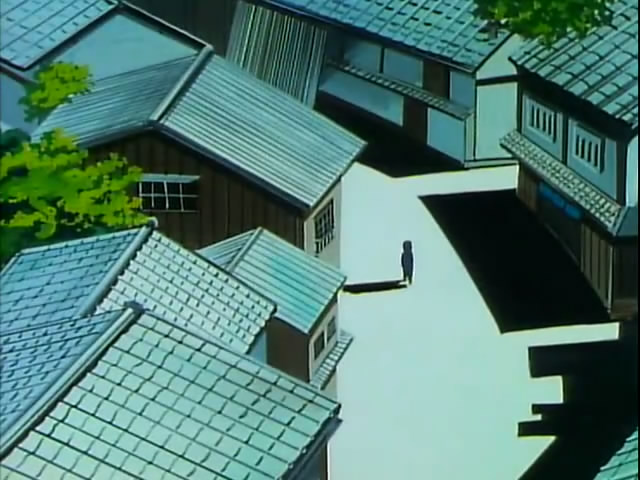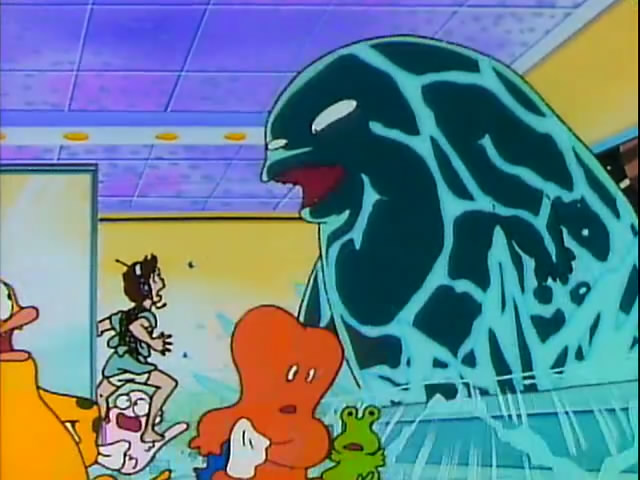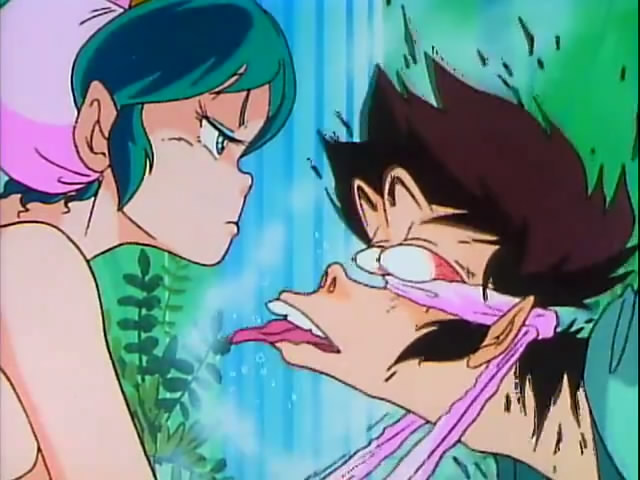Ataru wants a part time job, so Lum helps him get a job at the Asura bathhouse. Ataru’s happy with this as he thinks it will give him the chance to spy on pretty girls. In order to get to the bathhouse though, he has to enter a strange part of town. One that feels like it’s come from the pen of Shigeru Mizuki.

In many ways this feels like a dry run for Beautiful Dreamer. There’s a surreal dreamlike quality to it not to mention some specific visuals that would be used in that film (the deserted streets, the inability to see some characters faces, the elusive Chindon’ya band, characters finding themselves back where they started). In fact, without Ataru and Lum you’d could mistake this for a horror anime for much of the first 10 minutes.

The second half however is back to the normal goofery, as Ataru discovers the bathhouse is for aliens and monsters, rather than the cute girls he thought would be here. However when Ten shows up, he learns there actually is a women’s side and that it’s not as terrifying as the men’s side. So he tries to get over to that side. Lum stops him, but when he hears Benten and Oyuki’s voices he just gets more determined. And so we are treated to lots of attempts by Ataru to get across the wall. Eventually he manages to get there, but Lum blindfolds him and he ends up making out with a statue.
Then Ten blows him up and suddenly the mood changes back to the ghost story we started with. THE END.
The second half is probably the closest in animation terms the show has come so far to the later Takahashi adaptations in terms of character design and movement. It’s also an excuse for the animators to draw a load of naked women and spaceships. Yes spaceships. They find a way to insert a gratuitous amount of spaceships into this episode. Oh and there’s this frame, which is one of the greatest I’ve seen in the series so far:

All told, this is a very odd episode. The space bathhouse bit seems something straight out of Takahashi’s head, but I do wonder if the bookending horror/ghost story elements were something Ito thought of. It’s times like these I wish Viz had all of UY translated.
—
Screenplay: Kazunori Ito
Storyboard: Keiji Hayakawa
Director: Keiji Hayakawa
Animation Director: Hayao Nobe
